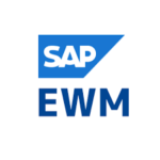Oracle DBA
The Oracle DBA online course is designed to ensure that you learn & master the concepts of Administring in the Database field and pass the certification exam on your first try. Our training will help you learn how to administer and master the oracle DBA field. The practical hands-on learning approach followed in the course will ensure you get job-ready by the end of it.
About Course
We at Golive classes provide world-class Oracle DBA course Online Training.
Our Oracle DBA Online Course Syllabus will help you to know basic to advanced level techniques in Oracle DBA. Enroll for Oracle DBA Online Course with Golive Classes and get extensive knowledge on the Oracle Admin role.
We, at Golive Classes, provide you with a specialized Oracle DBA Online Training, from beginner to advanced level. We have experienced Oracle DBA experts who will guide and help you understand how to administering standalone Oracle databases. In addition, our team has customized this Oracle DBA Online Course curriculum to meet the standards of the current industry.
What is this course about?
As you know, Oracle is a database management system used by any corporation. An Oracle Database Administrator (Oracle DBA) is the one who administers and manages Oracle on multiple servers of firms. So, an Oracle DBA serves a very significant role in an organization.
Oracle Database administration inculcates many concepts. Primarily it involves the installation and up-gradation of the Oracle server. It constitutes configuration of the structure of the database, management of the server for multiple users, and resolution of any issues related to servers. An Oracle DBA should also be able to create the primary database storage structures and primary objects, and modify the database when necessary. He should manage the stored data and monitor the performance of the database network frequently to avoid disruptions.
What are the training Objectives of Oracle DBA online training?
The DBA involves enrolling the users and ensure system security. Proper planning for backup and recovery of database information is also the key responsibility of the DBA. He should also ensure any compliances with the Oracle license agreement.
Why should you learn the Oracle DBA course?
Oracle DBAs are needed now and will be for a long time to come. Thousands of companies need Oracle DBAs who understand the daily tasks needed to administer databases, optimize systems, and manage data. The new database direction of Oracle provides current DBAs with more opportunities. The database world is expanding.
Who should learn in this Oracle DBA training?
Fresh Engineering Graduates, SQL, SYBASE, and MYSQL DBAs who wish to lean Oracle, Aspirants who wish to learn more about Oracle database technology, People who are preparing for Oracle certification (OCA and OCP), Developers who want to understand how Oracle RDBMS works.
Why GoliveClasess?
1.We provide training along with Real-time concepts with case studies
2.Project Explanation
3.Interview Questions
4.Resume preparation
5.Technical Assistance even after Course Completion
6.Career Guidance
7.life time video recordings Acess
8.The assistance provides in consulting and placement
9.Free other courses will be provided free of cost.
Course Circullam:
Module1: Database Architecture
Describe course objectives
Explore the Oracle 10g database architecture
Module2: Installing the Oracle Database Software
Explain core DBA tasks and tools
Plan an Oracle installation
Use optimal flexible architecture
Install software with the Oracle Universal Installer (OUI)
Module3: Creating an Oracle Database
Create a database with the Database Configuration Assistant (DBCA)
Create a database design template with the DBCA
Generate database creation scripts with the DBCA
Module4: Managing the Oracle Instance
Start and stop the Oracle database and components
Use Enterprise Manager (EM)
Access a database with SQL*Plus and iSQL*Plus
Modify database initialization parameters
Understand the stages of database startup
View the Alert log
Use the Data Dictionary
Module 5: Managing Database Storage Structures
Describe table data storage (in blocks)
Define the purpose of tablespaces and data files
Understand and utilize Oracle Managed Files (OMF)
Create and manage tablespaces
Obtain tablespace information
Describe the main concepts and functionality of Automatic Storage Management (ASM)
Module 6: Administering User Security
Create and manage database user accounts
Authenticate users
Assign default storage areas (tablespaces)
Grant and revoke privileges
Create and manage roles
Create and manage profiles
Implement standard password security features
Control resource usage by users
Module 7: Managing Schema Objects
Define schema objects and data types
Create and modify tables
Define constraints
View the columns and contents of a table
Create indexes, views, and sequences
Explain the use of temporary tables
Use the Data Dictionary
Manage data through SQL
Monitor and resolve locking conflicts
Module 8:Managing Undo Data
Explain DML and undo data generation
Monitor and administer undo
Describe the difference between undo and redo data
Configure undo retention
Guarantee undo retention
Use the undo advisor
Module 9:Implementing Oracle Database Security
Describe DBA responsibilities for security
Apply the principle of least privilege
Enable standard database auditing
Specify audit options
Review audit information
Maintain the audit trail
Module 10:Configuring the Oracle Network Environment
Create additional listeners
Create Net Service aliases
Configure connect-time failover
Control the Oracle Net Listener
Test Oracle Net connectivity
Identify when to use shared versus dedicated servers
Module 11:Backup and Recovery Concepts
Identify the types of failure that may occur in an Oracle Database
Describe ways to tune instance recovery
Identify the importance of checkpoints, redo log files, and archived log files
Configure ARCHIVELOG mode
Module 12: Performing Database Backups
Create consistent database backups
Back your database up without shutting it down
Create incremental backups
Automate database backups
Monitor the flash recovery area
Module 13: Performing Database Recovery
Recover from loss of a control file
Recover from loss of a redo log file
Perform complete recovery following the loss of a data file
Module 14: Performing Flashback
Describe Flashback database
Restore the table content to a specific point in the past with Flashback Table
Recover from a dropped table
View the contents of the database as of any single point in time with Flashback Query
See versions of a row over time with Flashback Versions Query
View the transaction history of a row with the Flashback Transaction Query.
Module 15: Moving Data
Describe available ways for moving data Create and use directory objects
Use SQL*Loader to load data from a non-Oracle database (or user files)
Explain the general architecture of Data Pump
Use Data Pump Export and Import to move data between Oracle databases
Use external tables to move data via platform-independent files.
Module 16: Configuring Recovery Manager
Recovery Manager Features and Components
Using a Flash Recovery Area with RMAN
Configuring RMAN
Control File Auto backups
Retention Policies and Channel Allocation
Using Recovery Manager to connect to a target database in default NOCATALOG mode
Displaying the current RMAN configuration settings
Altering the backup retention policy for a database
Module 17: Using Recovery Manager
RMAN Command Overview
Parallelization of Backup Sets
Compressed Backups
Image Copy
Whole Database and Incremental Backups
LIST and REPORT commands
Enable ARCHIVELOG mode for the database
Use Recovery Manager
Module 18: Recovering from Non-critical Losses
Recovery of Non-Critical Files
Creating New Temporary Tablespace
Recreating Redo Log Files, Index Tablespaces, and Indexes
Read-Only Tablespace Recovery
Authentication Methods for Database Administrators
Loss of Password Authentication File
Creating a new temporary tablespace
Altering the default temporary tablespace for a database
Module 19: Incomplete Recovery
Recovery Steps
Server and User-Managed Recovery commands
Recovering a Control File Autobackup
Creating a New Control File
Incomplete Recovery Overview
Incomplete Recovery Best Practices
Simplified Recovery Through RESETLOGS
Point-in-time recovery using RMAN
Module 20: Flashback
Flashback Database Architecture
Configuring and Monitoring Flashback Database
Backing Up the Flash Recovery Area
Using V$FLASH_RECOVERY_AREA_USAGE
Flashback Database Considerations
Using the Flashback Database RMAN interface
Using Flashback Database EM Interface
Managing and monitoring Flashback Database operations
Module 21: Dealing with Database Corruption
Block Corruption Symptoms: ORA-1578
DBVERIFY Utility and the ANALYZE command
Initialization parameter DB_BLOCK_CHECKING
Segment Metadata Dump and Verification
Using Flashback for Logical Corruption and using DBMS_REPAIR
Block Media Recovery
RMAN BMR Interface
Dumping and Verifying Segment MetadataMonitoring and Managing Storage I
Database Storage Structures
Space Management Overview
Oracle-Managed Files (OMF)
Row Chaining and Migrating
Proactive Tablespace Monitoring
Managing Resumable Space Allocation
SYSAUX Tablespace
Monitoring table and index space usage
Module 22: Monitoring and Managing Storage II
Automatic Undo Management
Redo Log Files
Table Types
Partitioned Tables
Index-Organized Tables (IOT)
Managing index space with SQL
Configure optimal redo log file size
Module 23: VLDB Support
Creating Bigfile Tablespaces
Packages and data dictionary changes to support VLDB
Creating and maintaining temporary tablespace groups (TTG)
Partitioning and Partitioned Indexes
Skipping unusable indexes
DML Error Logging
Interpreting Bigfile ROWIDs
Module 24: Automating Tasks with the Scheduler
Scheduler Concepts
Creating a Job Class and a Window
Managing Jobs, Programs, Chains, Events, Schedules, priority
Viewing and Purging Job Logs
Creating a program and a schedule
Creating a job that uses a program and a schedule
Altering the program and schedule for the job and observing the behavior change of the job
Monitoring job runs











